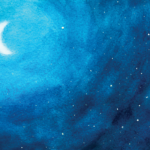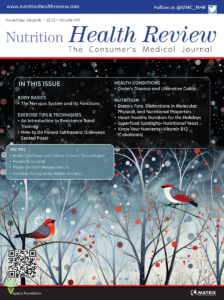 Sleep paralysis (SP) affects millions of people each year.1,2 It is a type of parasomnia—an umbrella term for unusual or undesirable behaviors that occur during sleep—that can happen in isolated incidents or reoccur over time. Despite its commonness, however, this condition is not well understood by experts.3 While the overriding causes of SP are still unknown, experts have been able to pinpoint the biological start of these episodes, which occur when the body’s transition into or out of sleep is out of sync with the brain.4–6
Sleep paralysis (SP) affects millions of people each year.1,2 It is a type of parasomnia—an umbrella term for unusual or undesirable behaviors that occur during sleep—that can happen in isolated incidents or reoccur over time. Despite its commonness, however, this condition is not well understood by experts.3 While the overriding causes of SP are still unknown, experts have been able to pinpoint the biological start of these episodes, which occur when the body’s transition into or out of sleep is out of sync with the brain.4–6
Our bodies experience a specific five-stage cycle when we sleep, with each phase lasting 1 to 2 hours.7 The first four stages make up non-rapid eye movement (NREM) sleep, and the fifth and final stage is REM sleep.1,8 During REM, your brain sends a signal down your spine that paralyzes voluntary muscles.6 This is a good thing! This stage prevents you from physically acting out your dreams and injuring yourself (or others) while you are asleep. At the same time, however, REM sleep is when your brain is most active.1,6 During this stage, your dreams are most vivid, with sights and sounds feeling very real to you.
The Path of Sleep Paralysis
An active mind and forcibly still body can be tricky. We all technically experience SP during REM, but we are nearly always unconscious during this stage.6 Normally, your body experiences a smooth transition into the next phase. You don’t notice the paralysis because you’re immersed in sleep. However, parasomniac episodes of SP—the ones notorious for nightmares and distress—are caused when this transition is interrupted.
SP occurs when people experience a recovery of consciousness before their brain-induced paralysis has a chance to go away.6 The person is conscious of their immobility but is unable to move. In simple terms, your brain is awake before your body is. This forced stillness is accompanied by feelings of impending doom and vivid audio, visual, and/or sensory hallucinations.1,2,4–6 People often make unsuccessful efforts to sit up or move their limbs to “wake up,” which can induce further anxiety.1 These episodes usually only last 30 to 60 seconds but can feel like minutes or hours.6 While they are not physically harmful or indicative of a greater health issue, you may remember SP episodes as a haunting and horrifying experience. They generally fall into one of three categories:
Intruder: The person hallucinates sounds of doorknobs turning, doors creaking, shuffling footsteps, a shadow man, or sense of a threatening presence in the room.6,9
Incubus: The person hallucinates feelings of pressure on the chest and difficulty breathing, with the sense of being smothered, strangled, or assaulted by a malevolent being.6,9,10
Vestibular-motor: The person hallucinates a sense of movement, such as spinning, falling, floating, flying, hovering over one’s body or another type of out-of-body experience.6,9,10
Research shows that the hallucinations a person experiences during SP are often influenced by a person’s culture and are sometimes described in terms of paranormal activity. For example, the incubus nightmare has been described as a witch riding your chest in the African American community in the Deep South, a breath-stealing mouse in Eastern Asia, a demon in Fiji, and a ghost in Thailand.10 In fact, some experts say that SP has received more attention from cultural and religious bodies than medical institutions because of its supposed association with the supernatural.
Risk Factors
As mentioned above, experts have only been able to pinpoint the timing and characteristics of parasomniac episodes of SP: a biologically induced paralysis that occurs when the body and the brain’s transition to and from sleep is out of sync.1,2,4–7 There has not yet been a well-defined answer to its overriding cause(s) because this area is still under-researched.11 This is largely due to the lack of a “gold standard” that defines and measures empirical data in SP research, which makes even estimating its prevalence difficult. A 2018 review of the prevalence rates of SP estimated that eight percent of the general population may experience this condition during their lifetime, but individual studies vary greatly, with some reporting rates as low as two percent and others up to 60 percent.2,11 What experts can agree upon is that multiple and overlapping factors are involved in provoking SP.8,12 Some of these factors may include the following.
Age, sex, and race. While SP can happen at any age, research shows that symptoms of SP often begin in childhood, adolescence, or young adulthood (between the ages of 7 and 25 years). If episodes begin during these early stages, they may occur more frequently in a person’s 20s and 30s.2,5,8,11 No differences in rates of SP based on race or sex have been observed, though some studies have found higher SP rates in non-White populations.3,8,11–14
Sleep and mental disorders. SP often coexists with sleep disorders or mental disorders, which have shown some of the strongest correlations with episodes of SP.8,11 Sleep disorders, such as narcolepsy, insomnia, and obstructive sleep apnea, as well as certain mental disorders, especially bipolar and posttraumatic stress disorders, can trigger these episodes.1,3–5,11 Similarly, many people report stressful events, such as life and work schedule changes or traumatic experiences, preceding SP.3
Poor sleep habits. People with poor sleep hygiene, which is broadly characterized by a person’s bedroom setting and daily habits, may be at a higher risk for SP.9,11,16 This includes people with disrupted circadian rhythms, such as those experiencing jet lag or who have a job that involves shift work.4,5,8
Physical health. Though it is not nearly as well established as the relationship between mental disorders, sleep disorders, and SP, some research has indicated a correlation between SP and certain health conditions.6,8,11 For example, some studies have shown that SP can be a symptom of migraines, hypertension, substance use, or chronic pain.8,11,17
Genetics. Some researchers theorize that there is a hereditary component in SP.2,3,11 This has left some experts to posit that there is a genetic predisposition to this condition, and a 2015 study in twins did find “moderate genetic influences” on “variation in presence of sleep paralysis.”8,11,13 Still, experts have not yet pinpointed a specific SP gene.
Prevention and Treatment
Unfortunately, there are no proven therapies or specific steps you can take that can stop episodes of SP. What prevention measures you can take, however, are in your own hands. These should focus on stress management and supporting sleep hygiene by the following:
- Sticking to regular sleep schedule that includes 7 to 9 hours of sleep.
- Maintaining a scheduled relaxing ready-for-bed routine.
- Taking measures to block or limit light or noise from outside your bedroom.
- Putting away electronic devices at least 30 minutes before turning out the lights.
- Avoiding alcoholic and caffeinated beverages before bed.6,8,11,17
SP typically does not significantly affect sleep or overall health.6,18 However, if the episodes make you anxious, become too frequent, or disrupt your quality of life, consider visiting your doctor,6–8 who may refer you to a sleep specialist, also called a somnologist, for a sleep study to guide treatment.6
Bottom Line
SP occurs when your transition into or out of sleep is interrupted, leaving your body paralyzed or “asleep” but your conscious mind wide “awake.” Episodes usually include vivid audio, visual, and/or sensory hallucinations. While SP is a generally benign condition, these experiences can be disturbing. More research based in data empirical data is needed to better understand SP’s causes and guide tailored treatment.
SOURCES
- Choi A. The nightmare of sleep paralysis. 16 Aug 2018. PBS website. https://www.pbs.org/wgbh/nova/article/the-nightmare-of-sleep-paralysis/. Accessed 14 Jun 2022.
- Sharpless BA, Barber JP. Lifetime prevalence rates of sleep paralysis: a systematic review. Sleep Med Rev. 2011;15(5):311–315.
- Farooq M, Anjum F. Sleep paralysis. [Updated 2021 Dec 8]. In: StatPearls [Internet]. Treasure Island (FL): StatPearls Publishing; 2022.
- Pacheco D. Parasomnias. Updated 11 Mar 2022. SleepFoundation website. https://www.sleepfoundation.org/parasomnias. Accessed 14 Jun 2022.
- Sharpless BA, Grom JL. Isolated sleep paralysis: fear, prevention, and disruption. Behav Sleep Med. 2016;14(2):134–139.
- Ward A, Winter WC. Somnology (SLEEP) Part I with Dr. W Chris Winter. Updated 15 Oct 2018. Ologies website. https://www.alieward.com/ologies/somnology. Accessed 12 Jun 2022.
- Peters B. What are the symptoms of sleep paralysis? Updated 29 Nov 2021. VeryWell Health website. https://www.verywellhealth.com/symptoms-of-sleep-paralysis-3014781. Accessed 14 Jun 2022.
- Suni E. What you should know about sleep paralysis. 11 Mar 2022. SleepFoundation website. https://www.sleepfoundation.org/parasomnias/sleep-paralysis#:~:text=Sleep%20paralysis%20is%20a%20temporary,and%20a%20sensation%20of%20suffocation. Accessed 14 Jun 2022.
- Jalal B, Ramachandran VS. Sleep paralysis, “the ghostly bedroom intruder” and out-of-body experiences: the role of mirror neurons. Front Hum Neurosci. 2017;11:92.
- Ramirez R, Kwong E. Seeing monsters? It could be the nightmare of sleep paralysis. 26 Nov 2019. NPR website. https://www.npr.org/2019/11/21/781724874/seeing-monsters-it-could-be-the-nightmare-of-sleep-paralysis. Accessed 14 Jun 2022.
- Denis D, French CC, Gregory AM. A systematic review of variables associated with sleep paralysis. Sleep Med Rev. 2018;38:141–157.
- Olunu E, Kimo R, Onigbinde EO, et al. Sleep paralysis, a medical condition with a diverse cultural interpretation. Int J Appl Basic Med Res. 2018;8(3):137–142.
- Denis D, French CC, Rowe R, et al. A twin and molecular genetics study of sleep paralysis and associated factors. J Sleep Res. 2015;24(4):438–446.
- Lišková M, Janečková D, Klůzová Kráčmarová L, et al. The occurrence and predictive factors of sleep paralysis in university students. Neuropsychiatr Dis Treat. 2016;12:2957–2962.
- Hershner S, Morse A. What is sleep paralysis? Aug 2020. American Academy of Sleep Medicine website. https://sleepeducation.org/sleep-disorders/sleep-paralysis/. Accessed 14 Jun 2022.
- Davis K. Everything you need to know about sleep paralysis. Updated 24 May 2017. Medical News Today website. https://www.medicalnewstoday.com/articles/295039. Accessed 12 Jun 2022.
- Cleveland Clinic website. Sleep paralysis. Updated 18 Oct 2021. https://my.clevelandclinic.org/health/diseases/21974-sleep-paralysis. Accessed 25 Jun 2022.
Written by
NHR Staff





